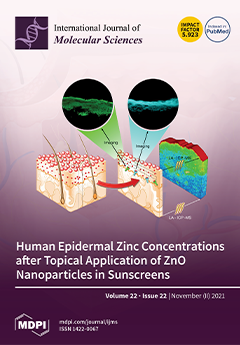Fungi are exposed to various environmental variables during their life cycle, including changes in CO
2 concentration. CO
2 has the potential to act as an activator of several cell signaling pathways. In fungi, the sensing of CO
2 triggers cell differentiation and
[...] Read more.
Fungi are exposed to various environmental variables during their life cycle, including changes in CO
2 concentration. CO
2 has the potential to act as an activator of several cell signaling pathways. In fungi, the sensing of CO
2 triggers cell differentiation and the biosynthesis of proteins involved in the metabolism and pathogenicity of these microorganisms. The molecular machineries involved in CO
2 sensing constitute a promising target for the development of antifungals. Carbonic anhydrases (CAs, EC 4.2.1.1) are crucial enzymes in the CO
2 sensing systems of fungi, because they catalyze the reversible hydration of CO
2 to proton and HCO
3-. Bicarbonate in turn boots a cascade of reactions triggering fungal pathogenicity and metabolism. Accordingly, CAs affect microorganism proliferation and may represent a potential therapeutic target against fungal infection. Here, the inhibition of the unique
β-CA (MpaCA) encoded in the genome of
Malassezia pachydermatis, a fungus with substantial relevance in veterinary and medical sciences, was investigated using a series of conventional CA inhibitors (CAIs), namely aromatic and heterocyclic sulfonamides. This study aimed to describe novel candidates that can kill this harmful fungus by inhibiting their CA, and thus lead to effective anti-dandruff and anti-seborrheic dermatitis agents. In this context, current antifungal compounds, such as the azoles and their derivatives, have been demonstrated to induce the selection of resistant fungal strains and lose therapeutic efficacy, which might be restored by the concomitant use of alternative compounds, such as the fungal CA inhibitors.
Full article






